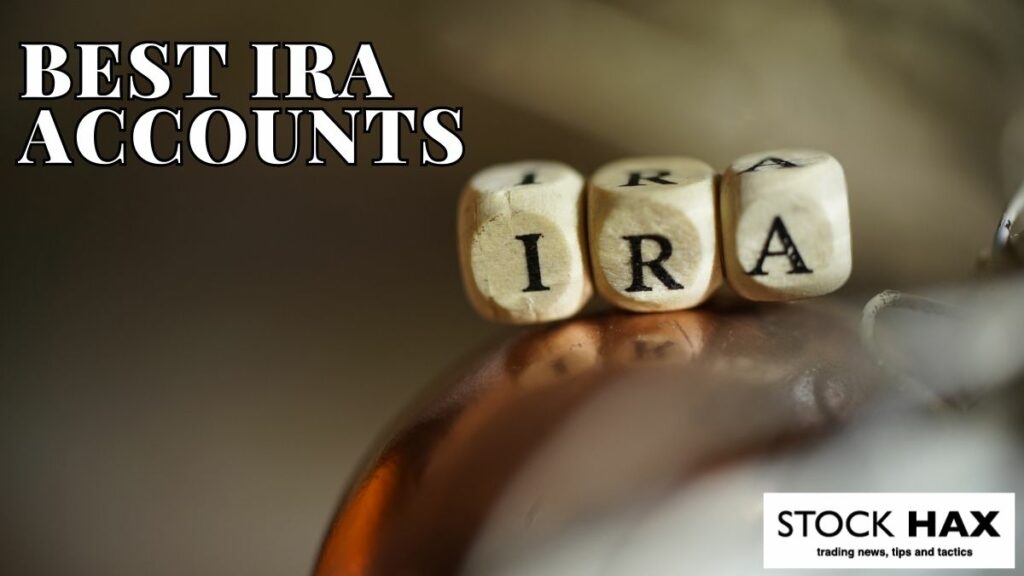
Individual Retirement Accounts (IRAs) are a popular type of retirement account that people use to save money for their retirement. IRAs also provide the opportunity to add exposure to stocks, mutual funds, and bonds to grow their retirement funds.
Deciding on the right IRA account to open can be difficult at times, especially if your goal is to maximize your retirement savings. The available choices for individuals vary in aspects such as fees and the range of asset types. Individuals need to choose an account that fits their needs and financial goals.
Your choice of IRA account should be based primarily on your objective, rather than subjective, opinions and biases. This will help make sure that your decisions are not based on external pressure or irrational preferences, but rather based on research and analysis,
In this article, we will look at the factors to consider when opening an IRA account and the best IRA accounts. Without further delays, let’s carry on.
Contents
Criteria for Selecting the Best IRA Account for Your Goals
Before opening an Individual Retirement Account, you should factor in some criteria to ensure that you are selecting the best IRA account for your retirement savings. Below are some vital factors to consider:
Performance
It is important to analyze the historical performance of an IRA account, and then compare it to other possible options. Sometimes past performance is not a good indicator of future performance, but it can help as a possible indicator of growth potential.
Expenses and Fees
This is one of the most important factors to consider before opening an IRA account. Fees and expenses can affect the growth rate of your retirement savings. An account with low fees will not eat too deeply into your returns. Transaction fees, maintenance fees, and other expenses associated with the account are something to look at and factor into your decision.
Contribution limits and account minimums
IRA accounts usually have a minimum investment deposit requirement or contribution limit. These requirements and limits can affect your ability to make frequent contributions or the size of contributions that you can make. These limits directly determine how much you can save.
Customer Service
Customer support is always an important factor to consider when money is involved. There is a possibility that you could run into issues or have questions and need the assistance of customer support. When looking to open an IRA account, good and accessible customer service should be looked out for.
Asset Classes
Stocks, bonds, mutual funds, exchange-traded funds (ETFs), and other asset classes are available in various IRA accounts. Individuals must select an account with various options that align with their financial goals and tolerance for risk.
It’s crucial to remember that while choosing an IRA account, you might have to compromise between these factors. For instance, a lower fee account can have fewer asset classes to choose from, but a higher fee account might have more options. Individuals must assess their priorities to select the IRA account that aligns with their financial goals and situation.
Best Online Accounts
We have done a thorough analysis of several IRA accounts, and below are some solid options, in no particular order.
Betterment
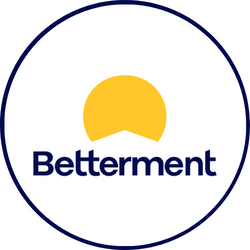
Betterment was founded by Jon Stein in 2008, and they currently offer SEP IRAs, rollover IRAs, inherited IRAs, Roth IRAs, and traditional IRAs. This company offers an amazing automated platform while giving users flexibility with their portfolios. Betterment also offers a range of planning tools to help with your financial goals while allowing you to track your progress. They provide an external account aggregate so you can get an overview of your retirement plan. Betterment alerts you when you are behind your goals, prompting you to add more funds.
Exchange-traded funds are the only asset class available on Betterment; users can adjust their portfolio to what will best suit their goals and risk tolerance. Betterment offers an income portfolio that is solely designed for retirement and focused on generating cash flow. Additionally, they provide SRI portfolios that prioritize socially responsibility. If you need further guidance, Betterment offers human financial advisors for an extra fee. This platform also boasts an extensive collection of educational resources, making it a top choice for opening an IRA.
- No minimum deposit requirement ($10 to start)
- Flexibile portfolio management
- Easy onboarding process
- Comprehensive planning
- High requirements for premium plans
- Only ETFs available, no borrowing
- Expensive human advisors
- Limited self-directed retirement management options
Wealthfront
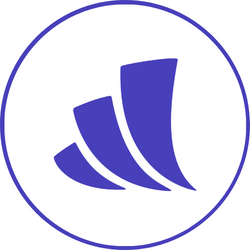
Wealthfront was founded in 2008 by Andy Rachleff. Wealthfront is a leading robo-advisor that excels in goal setting, digital planning, and progress tracking, making it an ideal choice for retirement-focused individuals. With innovative features like Self-Driving Money and Path, Wealthfront allows you to allocate extra cash towards your goals using automation. When coupled with a comprehensive arsenal of management tools, Wealthfront becomes a powerful resource for managing your retirement strategy and IRA.
One of the key strengths of Wealthfront is its external account aggregation feature. This feature allows you to view your overall financial situation in one place, providing a holistic view of your finances. As your financial situation changes over time, the account aggregation feature ensures that these changes are factored into your retirement plan. This is a crucial aspect of holistic planning and analysis, enabling you to better understand the likelihood of achieving your retirement goals. Wealthfront’s robust retirement planning options, combined with its innovative features, make it an excellent option to consider.
- External account aggregation for comprehensive retirement planning
- Some tools help manage funds towards goals
- Excellent financial planning features for retirement
- Over $100,000 required for some strategies
- Limited account options (SEP, Roth, Rollover, traditional)
- No self-directed or human financial advisor options for financial management
Fidelity Investments

Fidelity Investments was founded in 1946 and has positioned itself as a top-tier IRA provider due to its low fees, extensive management options, and exceptional tools. As a Fidelity customer, you can customize your retirement savings route by selecting from advisor-driven, automated portfolio management, or self-driven strategies that align with your preferences. Whatever path you decide to take, Fidelity’s tools, reports, and calculators, are designed to be user-friendly and impactful.
Fidelity retirement customers, at all stages of the planning process and experience level, will find Fidelity’s mix of retirement planning capabilities and educational resources helpful in keeping them on track. For those starting their retirement savings journey, Fidelity provides assistance and planning based on your preferences and goals. Those approaching retirement can take advantage of withdrawal calculators and social security distributions to create an income strategy. Fidelity consistently enhances its services to provide more features that can help retirement savers.
- No minimum deposit required
- Multiple IRA options available
- Comprehensive library of planning and educational content
- All types of IRA accounts offered
- Accounts only available to US residents
- Difficulty in finding some tools
Merrill Edge
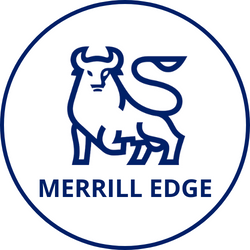
Merrill Edge is an excellent choice for opening an IRA account due to its comprehensive selection of tools and educational content on retirement. The platform is fully integrated with Bank of America, providing custom portfolio analysis that uses retirement account data from both organizations. The flexibility to choose between a self-guided, automated advisor, and financial adviser experience allows you to customize your retirement approach based on your need for financial advice.
One of Merrill Edge’s standout features is its Portfolio Story tool. Individuals with a self-directed approach can benefit from this innovative tool, which aids in understanding their portfolio and choices. It is tailored to the asset allocation and provides updates on your goals in an easy-to-understand format. This level of customization and insight is invaluable when planning your retirement strategy.
- No minimum for self-managed accounts
- Helpful educational content and retirement tools
- Minimum of $20,000 for advisor assistance
- Guided investing starts at $1000
Charles Schwab
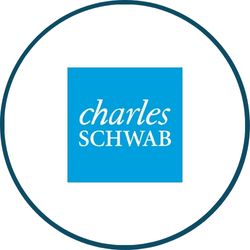
Charles Schwab’s expansive product catalogue provides retirement savers with a wealth of tools and options, making it an ideal platform for managing your IRA. They offer a full range of IRA account types, you can choose to use the Intelligent Portfolios robo-advisor offering, collaborate with a financial advisor, or adopt a self-directed approach to your retirement plan. Schwab’s advice section is also an invaluable resource, with tools and calculators designed to help retirement savers of all ages, financial strengths, and experience levels stay on track.
Schwab’s true strength lies in its comprehensive ETF screening options. These offerings include selection criteria-rich filters, portfolio builders, and instruments featuring socially responsible investment (SRI) possibilities. A screener for closed-end funds which possess the potential to affect the outcome of retirement income. This feature enables you to match your preferences and retirement savings goals, making sure that your portfolio is tailored to your requirements.
- Wide range of IRA accounts available
- Option to choose automated or human advisor, or self-manage portfolio
- Comprehensive ETF screening support
- Intelligent portfolio requires minimum of $5,000, $25,000 for premium
- High margin rates and fees compared to competition
Comparison of the best IRA accounts
Fidelity Investments, Charles Schwab, Merrill Edge, Wealthfront, and Betterment are all investment management firms that offer Individual Retirement Accounts (IRAs) to help clients save for retirement.
Fidelity, Charles Schwab, Merrill Edge, Wealthfront, and Betterment all have a history of strong performance, although the returns may vary depending on the options and market conditions.
Fidelity, Charles Schwab, and Merrill Edge have relatively low fees for their IRA accounts. Wealthfront and Betterment charge higher fees due to their robo-advisor features. However, Wealthfront and Betterment do not charge any additional transaction fees.
Fidelity, Charles Schwab, Merrill Edge, Wealthfront, and Betterment have similar IRA contribution limits and account minimums. The maximum annual contribution limit for 2023 is $6,000 for those under age 50 and $7,000 for those 50 and older. Fidelity, Charles Schwab, and Merrill Edge have no account minimums, while Wealthfront and Betterment have minimums of $500 and $100, respectively.
Fidelity, Charles Schwab, and Merrill Edge offer comprehensive customer service, including access to financial advisors, phone and email support, and online resources. Wealthfront and Betterment offer customer service via phone, email, and chat, but they do not offer access to human financial advisors.
Fidelity, Charles Schwab, Merrill Edge, Wealthfront, and Betterment all offer a wide range of investment options, including mutual funds, ETFs, individual stocks and bonds, and more. Fidelity, Charles Schwab, and Merrill Edge also offer access to international stocks and options trading, while Wealthfront and Betterment focus more on automated, low-cost strategies
Fidelity, Charles Schwab, and Merrill Edge are all well-established IRA providers with low fees, comprehensive customer service, and a wide range of asset classes to choose from. Wealthfront and Betterment are newer players in the field, with higher fees but innovative robo-advisor features and automated strategies. When considering an IRA provider, evaluate your investment goals, risk tolerance, and preferences for hands-on vs. automated investment management.
Conclusion
IRAs, or Individual Retirement Accounts, are a beneficial option for saving towards retirement with tax benefits and growth potential. Choosing the right IRA account can be challenging, considering various factors such as fees and asset classes available. It is crucial to select an account that aligns with your financial goals and needs.
It is important to analyze the historical performance of IRA accounts, compare fees and expenses, consider account minimums, evaluate customer service quality, and explore available options when selecting an IRA account. However, it may be necessary to make trade-offs between these factors to choose an account that aligns with your specific needs.
FAQs
The benefits of having an IRA account include tax-deferred or tax-free growth, potential tax deductions, and a wide range of exposure to different asset classes.
The two main types of IRA accounts are traditional IRAs and Roth IRAs. Traditional IRA contributions may be tax-deductible, but taxes are due on withdrawals. Roth IRA contributions are made with after-tax dollars, but withdrawals are tax-free.
Factors to consider when choosing an IRA account include fees, asset classes, customer service, and minimum balance requirements.
StockHax strives to provide unbiased and reliable information on cryptocurrency, finance, trading, and stocks. However, we cannot provide financial advice and urge users to do their own research and due diligence.
Read More